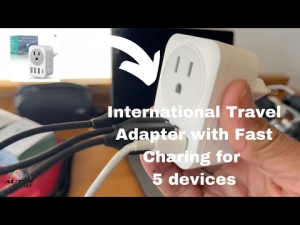How Would Ford’s Plan to Charge Electric Cars by Towing Them Work?
Ford recently patented a strange, albeit feasible way to charge electric cars. It’s called Ford Regen. Rather than stopping at a charger and twiddling your thumbs, you could hook your EV up to a towing rig and charge it while on the move. This is a creative solution to the most common complaint of electric vehicles, eliminating the need for long stops. But exactly how does it work, and is it foolproof?
The patent revolves around regenerative braking
If you drive an electric vehicle, chances are you already know about or use regenerative braking on a day-to-day basis. The concept is simple: braking generates kinetic energy (and heat). That energy is converted to electricity and travels to the motor for later usage. It’s a brilliant way of recovering some charge and is the reason non-plug-in hybrids, commonly referred to as HEVs, don’t actually need to plug in. Provided, those HEVs can only run on pure electricity for a couple of miles, but it still makes them more economical.
What Ford has proposed is for the electric vehicle to link with a tow vehicle, then step on the brakes. The electric motor reverts into more of a generator, collecting the kinetic energy from that constant braking to charge the car. And as you keep moving forward, the car keeps charging.
And after you’re all charged up, just decouple and keep going. The applications for this are great: it’ll give EVs the extra push to handle long road trips without long stops. Or if an EV runs out of charge, a quick tow will get it up and running again. In theory, this method could recharge other electric vehicles, but it isn’t as simple as strapping an electric car to a tow truck and heading on your merry way.
What kinds of tow vehicles could be used?

The photos used in Ford’s patent all show the tow vehicle as an 18-wheeler, not just some Ford F-150 that anyone can go and buy. While the reasoning for this isn’t explained in the patent, one could easily piece together why. Towing a car is different than towing a car that’s actively braking. The latter is like a game of tug of war between the tow vehicle and the electric car. Obviously, a large truck would beat out an EV, but it’d take significantly more torque for a pedestrian-vehicle to do the job.
And it wasn’t in Ford’s plan to patent this tech for consumer trucks anyways. Laced in the fine print are details about autonomous communication between the EV and the tow vehicle. You can read the full patent here, but I’ll summarize the cool bits: when an electric car is running out of juice, the driver can ask the car to locate and drive to the nearest tow vehicle. From there, the car will navigate to the truck and autonomously hook up with it. The electric car will keep the truck updated on how much it’s charged, and once finished, will decouple with the truck and let the driver take over again.
It could serve as a much-needed break for the driver, and sounds incredibly convenient for anyone within Ford’s charge-by-tow network. But there are still a few questions and concerns as to whether Ford is serious about this concept.
Is charging by towing bad for your car?

One might ask if constant regenerative braking would be bad for the brakes. This is a great question, but while collecting that energy the car isn’t actually using the brakes. Regenerative breaking in an electric vehicle is the equivalent of engine braking in a gas-powered car. The car will naturally slow down because of engine resistance, though regenerative braking takes that up a notch. In short, it has nothing to do with the brakes or brake pads and everything to do with the motor.
That said, it’s uncertain as to if this clever solution will come to fruition. For starters, Ford would have to begin fitting their new electric cars with the technology needed to be towed. From there, they’d have to establish a fleet of capable trucks, and if they want to integrate all the autonomous tech, that’d require a hefty amount of money. So for now, this seems like some science fiction vaporwave. But who knows, someday you may see big rigs pulling electric cars down the road, getting a recharge to go.
RELATED: 5 Biggest Problems With Electric Vehicle Charging
The post How Would Ford’s Plan to Charge Electric Cars by Towing Them Work? appeared first on MotorBiscuit.







